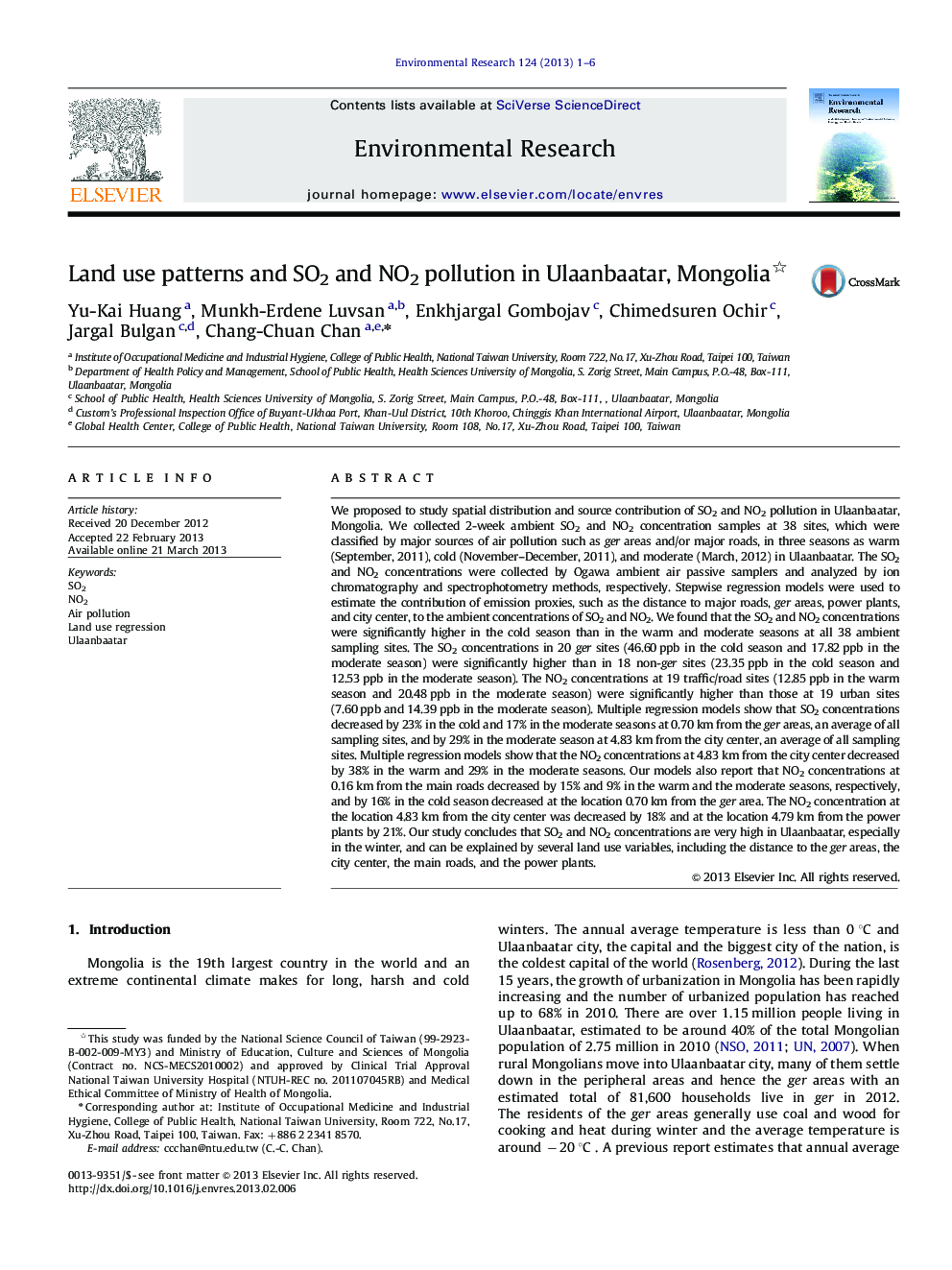| کد مقاله | کد نشریه | سال انتشار | مقاله انگلیسی | نسخه تمام متن |
|---|---|---|---|---|
| 4469826 | 1622577 | 2013 | 6 صفحه PDF | دانلود رایگان |

We proposed to study spatial distribution and source contribution of SO2 and NO2 pollution in Ulaanbaatar, Mongolia. We collected 2-week ambient SO2 and NO2 concentration samples at 38 sites, which were classified by major sources of air pollution such as ger areas and/or major roads, in three seasons as warm (September, 2011), cold (November–December, 2011), and moderate (March, 2012) in Ulaanbaatar. The SO2 and NO2 concentrations were collected by Ogawa ambient air passive samplers and analyzed by ion chromatography and spectrophotometry methods, respectively. Stepwise regression models were used to estimate the contribution of emission proxies, such as the distance to major roads, ger areas, power plants, and city center, to the ambient concentrations of SO2 and NO2. We found that the SO2 and NO2 concentrations were significantly higher in the cold season than in the warm and moderate seasons at all 38 ambient sampling sites. The SO2 concentrations in 20 ger sites (46.60 ppb in the cold season and 17.82 ppb in the moderate season) were significantly higher than in 18 non-ger sites (23.35 ppb in the cold season and 12.53 ppb in the moderate season). The NO2 concentrations at 19 traffic/road sites (12.85 ppb in the warm season and 20.48 ppb in the moderate season) were significantly higher than those at 19 urban sites (7.60 ppb and 14.39 ppb in the moderate season). Multiple regression models show that SO2 concentrations decreased by 23% in the cold and 17% in the moderate seasons at 0.70 km from the ger areas, an average of all sampling sites, and by 29% in the moderate season at 4.83 km from the city center, an average of all sampling sites. Multiple regression models show that the NO2 concentrations at 4.83 km from the city center decreased by 38% in the warm and 29% in the moderate seasons. Our models also report that NO2 concentrations at 0.16 km from the main roads decreased by 15% and 9% in the warm and the moderate seasons, respectively, and by 16% in the cold season decreased at the location 0.70 km from the ger area. The NO2 concentration at the location 4.83 km from the city center was decreased by 18% and at the location 4.79 km from the power plants by 21%. Our study concludes that SO2 and NO2 concentrations are very high in Ulaanbaatar, especially in the winter, and can be explained by several land use variables, including the distance to the ger areas, the city center, the main roads, and the power plants.
► SO2 concentrations in ger areas were significantly higher than in non-ger areas.
► NO2 concentrations near traffic routes were significantly higher than in other sites.
► SO2 and NO2 concentrations in the cold season were the highest among all seasons.
► The growth of gers and vehicles exacerbated SO2 and NO2 pollution in Ulaanbaatar.
Journal: Environmental Research - Volume 124, July 2013, Pages 1–6